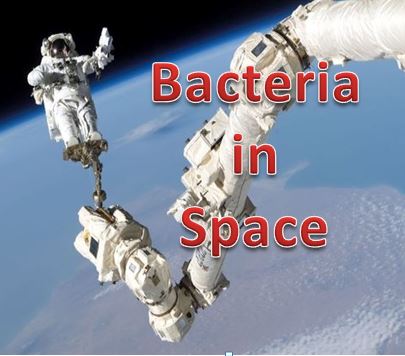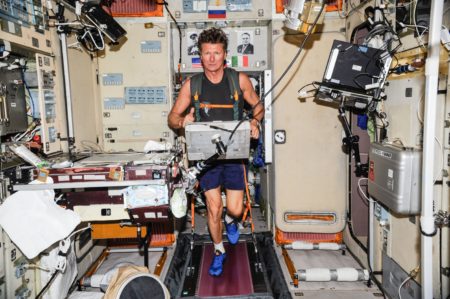Infectious Organisms Found on the International Space Station According to NASA
 According to a study entitled: “Multi-drug resistant Enterobacter bugandensis species isolated from the International Space Station and comparative genomic analyses with human pathogenic strains” by Singh et al, published in the open access journal BMC Microbiology , Strains of the bacterium Enterobacter, have been identified on the International Space Station (ISS).
According to a study entitled: “Multi-drug resistant Enterobacter bugandensis species isolated from the International Space Station and comparative genomic analyses with human pathogenic strains” by Singh et al, published in the open access journal BMC Microbiology , Strains of the bacterium Enterobacter, have been identified on the International Space Station (ISS).
Five Enterobacter bugandensis strains isolated from ISS were tested for their antimicrobial resistance (AMR) phenotypic properties, multiple drug resistance (MDR) gene profiles, and genes related to potential virulence and pathogenic properties.
The scientist from Jet Propulsion Laboratory, California Institute of Technology, investigated isolates from the space toilet and the exercise platform on the ISS and characterized bacterial communities that live on surfaces inside the space station.
The space Enterobacter bugandensis were compared with publically available strains for molecular phylogeny and whole genome analysis. From the ISS strains, 112 genes were identified as involved in virulence, disease, and defense. Genes were also identified as associated with resistance to antibiotics and toxic compounds, including the MDR tripartite system.
The study showed that the ISS Enterobacter has an increased probability of pathogenicity (PathogenFinder algorithm with > 79% probability) for humans. However, in-vivo analysis is required to determine the influence of microgravity on their pathogenicity.

According to the Daily Mail Dr. Nitin Singh, the lead author on the report, said: “Given the multi-drug resistance results for these [bacteria] and the increased chance of pathogenicity we have identified, these species potentially pose important health considerations for future missions.”
The corresponding author of this article, Dr. Kasthuri Venkateswaran, Senior Research Scientist at the Jet Propulsion Laboratory Biotechnology and Planetary Protection Group said: “We revealed that genomes of the five ISS Enterobacter strains were genetically most similar to three strains newly found on Earth. These three strains belonged to one species of the bacteria, called Enterobacter bugandensis, which had been found to cause disease in neonates and a compromised patient, who were admitted to three different hospitals (in East Africa, Washington state and Colorado).” “Whether or not an opportunistic pathogen like E. bugandensis causes disease and how much of a threat it is, depends on a variety of factors, including environmental ones. Further in vivo studies are needed to discern the impact that conditions on the ISS, such as microgravity, other space, and spacecraft-related factors, may have on pathogenicity and virulence.”
